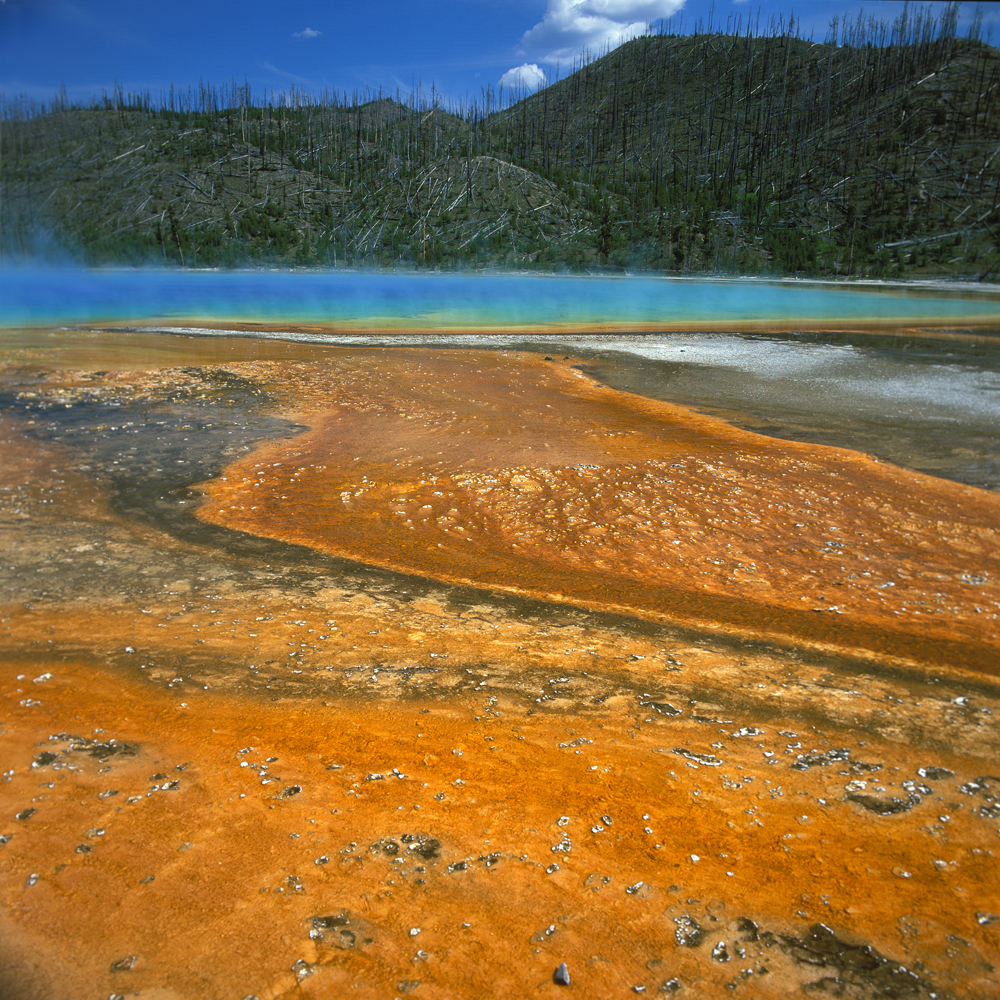

If you have spent any time around the thermal features in Yellowstone you will have noticed many of them are bordered by a variety of colors. Each color is characteristic of a specific organism. The shades of green are various species of algae and the oranges, tans, yellows and pinks are specific species of bacteria; each shade is an individual species. And each species of bacteria only lives in a specific really high temperature range. They live at temperatures that would kill us instantly; temperatures that are 200 degrees F and even higher.



Thermophilic means heat loving. All of the thermal pools in Yellowstone have their own thermophilic bacteria that survive only at high temperatures. The bacteria that like higher temperatures live closer to the center of the geyser. The ones who like cooler temperatures live closer to the edges or along the drainage rivulets. There are geysers and rivulets that contain a dozen species, or more, of bacteria. Some bacteria are found only within a 3 foot stretch of one rivulet. That 3 foot section is the only place it is found in the world.

Thermus aquaticus is one species of heat loving bacteria found in Yellowstone in Mushroom and Octopus pools along the Firehole Lake Drive. Thermus aquaticus (Taq) is an extremely important species of bacteria because it made the Polymerase Chain Reaction possible, which in turn has made all of the advances involving DNA fingerprinting, the Human Genome Project, as well as all of the discoveries about DNA in the last 25 years. To give you an idea of how important the Polymerase Chain Reaction is the person who invented it, Kary Mullis, shared a Nobel Prize in 1993.
Would you like to learn more? There are many websites but a good place to start is: http://tbi.montana.edu/livingcolors/
Our photos are available at: www.vernelehmberg.com.










So now I know when seeing yellow bacteria that it is really hot and there is no need to stick a finger in to find out. Great information, story and photos Judy.